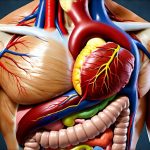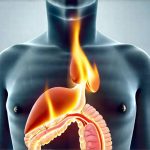Nausea is an incredibly unpleasant sensation, one most people experience at some point in their lives. It’s often dismissed as a temporary discomfort – perhaps from something eaten, motion sickness, or even stress. But when nausea becomes frequent, persistent, or seems to have no obvious trigger, it’s important to understand the potential underlying causes. Gastroesophageal reflux disease (GERD), commonly known as acid reflux, is frequently linked to chronic nausea, but the connection isn’t always straightforward. Many people associate reflux with heartburn, but nausea can be a prominent symptom, sometimes more bothersome than the burning sensation in the chest. Recognizing the specific signs of reflux-induced nausea allows for better understanding and ultimately, more effective management strategies.
The challenge lies in differentiating between nausea caused by reflux and nausea stemming from other sources – food poisoning, viral infections, migraine, or even anxiety. Reflux-related nausea often presents subtly and can be intermittent, making it harder to pinpoint. It’s not always the immediate, forceful vomiting many associate with illness; instead, it may manifest as a constant feeling of being unwell, a queasiness that lingers throughout the day, or waves of discomfort that come and go unpredictably. Understanding these nuances is crucial for seeking appropriate support and potentially preventing further complications. This article will explore the telltale signs of reflux-induced nausea, helping you identify whether your symptoms might be connected to GERD and what steps you can consider.
Identifying the Connection: Reflux & Nausea
The link between acid reflux and nausea isn’t merely coincidental; it’s rooted in how the digestive system functions and how disruptions within that system manifest as symptoms. When stomach acid frequently flows back up into the esophagus, it doesn’t just irritate the esophageal lining (causing heartburn). This backward flow can also stimulate the vagal nerve, a crucial nerve that runs from the brainstem to the abdomen and plays a vital role in digestion and nausea regulation. Stimulation of the vagal nerve often leads to feelings of sickness, even without vomiting. Furthermore, the acidic environment created by reflux can disrupt normal digestive processes further down the line, contributing to a general sense of unease and discomfort that’s experienced as nausea.
The type of food you eat plays a significant role in triggering both reflux and subsequent nausea. Fatty or fried foods, spicy dishes, citrus fruits, chocolate, caffeine, and carbonated beverages are all well-known culprits for increasing acid production and relaxing the lower esophageal sphincter (LES), which normally prevents stomach contents from flowing back up. When these foods are consumed, they can exacerbate reflux symptoms, including nausea. It’s important to note that triggers vary significantly between individuals; keeping a food diary can be an incredibly useful tool in identifying your personal sensitivities.
Finally, the timing of nausea relative to meals or bedtime is often telling. Nausea experienced shortly after eating, particularly if it worsens when lying down, strongly suggests a reflux connection. This is because the body’s natural defenses against reflux are weaker when horizontal. Nighttime reflux – known as nocturnal GERD – can also be associated with morning nausea, as stomach acid has had all night to irritate the esophagus and stimulate the vagal nerve. Recognizing these patterns helps differentiate reflux-induced nausea from other causes where symptoms may appear more randomly or in response to different stimuli. If you are concerned about underlying conditions, it is worth recognizing the signs of potential issues.
Distinguishing Features of Reflux Nausea
Reflux-related nausea often differs subtly from that caused by acute illness or food poisoning. One key difference is its tendency to be intermittent and cyclical. While food poisoning or a viral infection usually brings on sudden, intense nausea that’s accompanied by vomiting and other gastrointestinal distress, reflux nausea tends to come in waves. You might experience periods of relative calm followed by bouts of queasiness that last for minutes, hours, or even days. This unpredictable nature can be frustrating and difficult to diagnose without careful observation.
- Consider the accompanying symptoms: Heartburn, a sour taste in the mouth, regurgitation (the sensation of food coming back up), difficulty swallowing (dysphagia) and chronic cough are all common signs of reflux that often accompany nausea. The presence of these symptoms alongside nausea strongly suggests a GERD connection.
- Pay attention to posture: Does your nausea worsen when you lie down or bend over? This is a classic sign of reflux, as gravity facilitates the flow of stomach acid into the esophagus in these positions. Conversely, does it improve when you sit upright or stand up?
Another important distinction is that reflux-induced nausea rarely involves forceful vomiting. While some individuals may experience occasional regurgitation, it’s typically not the violent expulsion associated with acute illness. Instead, it’s more likely to be a feeling of sickness and unease without actual emesis. This can make it challenging for people to recognize the connection between their symptoms and reflux, as they don’t associate nausea with anything beyond vomiting. It is important to recognizing the signs if you suspect something else may be happening.
The Role of Bile Reflux in Nausea
While most discussions about reflux center around stomach acid, bile reflux can also contribute significantly to nausea. Bile is a digestive fluid produced by the liver that helps break down fats. Sometimes, bile can backflow from the small intestine into the stomach and esophagus, causing irritation and inflammation. This is more common after gallbladder removal or in individuals with certain digestive conditions. The symptoms of bile reflux can be very similar to those of acid reflux, including heartburn, nausea, and a bitter or sour taste in the mouth, but it often feels more persistent and less responsive to typical acid-reducing medications.
Identifying bile reflux as the source of nausea can be tricky, as standard GERD tests don’t always detect it. Your doctor may need to perform specialized testing – such as a gastric emptying study or an endoscopic examination with a biopsy – to confirm its presence. The treatment for bile reflux differs from that of acid reflux; medications aimed at reducing stomach acid production aren’t effective and can even worsen the condition. Instead, treatments focus on binding bile acids in the digestive tract. In some cases, you may need to seek help recognizing the signs of more serious issues like liver damage.
Lifestyle Adjustments & Seeking Medical Guidance
If you suspect your nausea is linked to reflux, several lifestyle adjustments can help manage symptoms. These include:
1. Elevating the head of your bed by 6-8 inches using blocks or a wedge pillow – this helps prevent acid from flowing back up into the esophagus while sleeping.
2. Avoiding trigger foods and beverages identified through a food diary.
3. Eating smaller, more frequent meals rather than large ones.
4. Losing weight if you are overweight or obese – excess weight puts pressure on the abdomen, increasing the risk of reflux.
5. Quitting smoking – smoking weakens the LES and increases acid production.
However, it’s crucial to consult a healthcare professional if your nausea is severe, persistent, or accompanied by other concerning symptoms such as difficulty swallowing, chest pain, unintentional weight loss, or blood in your vomit. These could indicate a more serious underlying condition that requires medical attention. A doctor can accurately diagnose the cause of your nausea and recommend appropriate treatment options, which may include over-the-counter antacids, prescription medications to reduce acid production (like proton pump inhibitors), or lifestyle modifications tailored to your specific needs. Remember, self-treating without proper diagnosis can delay effective care and potentially worsen your condition. If you are worried about underlying conditions like liver inflammation and damage, seek medical advice promptly. It is also important to be aware of the signs of histamine overload as this can sometimes mimic reflux symptoms. Be proactive about understanding potential issues, such as recognizing the early signs of liver cancer symptoms. Finally, if you suspect a connection with medication, review recognizing the signs of liver damage from OTC medications.


















